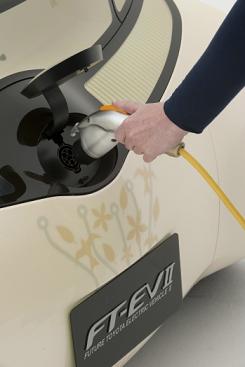How Do Tax Credits For Individuals With Electric Vehicles Work?
 U.S. law provides a federal tax credit for qualified plug-in electric drive vehicles, which includes passenger vehicles and light trucks. The credit for this type of vehicle originally was to expire in 2014 but was made permanent by the American Recovery and Reinvestment Act of 2009.
U.S. law provides a federal tax credit for qualified plug-in electric drive vehicles, which includes passenger vehicles and light trucks. The credit for this type of vehicle originally was to expire in 2014 but was made permanent by the American Recovery and Reinvestment Act of 2009.
The maximum credit allowed for a vehicle bought after 2009 is $7,500. As of December, nine manufacturers of this type of vehicle have received IRS acknowledgment of their eligibility for the credit, and the amount that qualifies. The list of qualified plug-in electric vehicles is on the IRS website at www.irs.gov/businesses
Taxpayers may generally rely on the vehicle manufacturer's certification that a specific make, model, and year qualifies for the credit and the amount that can be claimed. To be eligible to claim the credit, a taxpayer must:
- Own or lease the vehicle
- Have placed the vehicle in service during the tax year
- Be the original user
- Have acquired the vehicle for use or to lease to others, but not for resale
- Use the vehicle primarily in the United States
IRS Form 8936, Qualified Plug-in Electric Drive Motor Vehicle Credit, is used to claim the credit for vehicles placed in service during the tax year. A tax credit reduces your tax liability dollar-for-dollar, while a deduction reduces the amount of income that is subject to tax. This credit is available only if a taxpayer has a tax liability. Any unused credit for a vehicle that is only for personal use cannot be carried to previous or future tax years.
Tax liability for this purpose means the total tax owed for the year. It is not based on the amount owed with the tax return. For example, a self-employed person has a profit and a tax liability of $10,000, paid in estimated tax payments during the year. If the $7,500 tax credit applies, the taxpayer would normally be entitled to a refund of that latter amount.
The tax credit rules get much more complex if a vehicle is used in a business, including rules for a carry-back or carry-forward of unused credits. If this is your situation, you would be well advised to seek assistance from a tax professional when filing your return.
 U.S. law provides a federal tax credit for qualified plug-in electric drive vehicles, which includes passenger vehicles and light trucks. The credit for this type of vehicle originally was to expire in 2014 but was made permanent by the American Recovery and Reinvestment Act of 2009.
U.S. law provides a federal tax credit for qualified plug-in electric drive vehicles, which includes passenger vehicles and light trucks. The credit for this type of vehicle originally was to expire in 2014 but was made permanent by the American Recovery and Reinvestment Act of 2009.